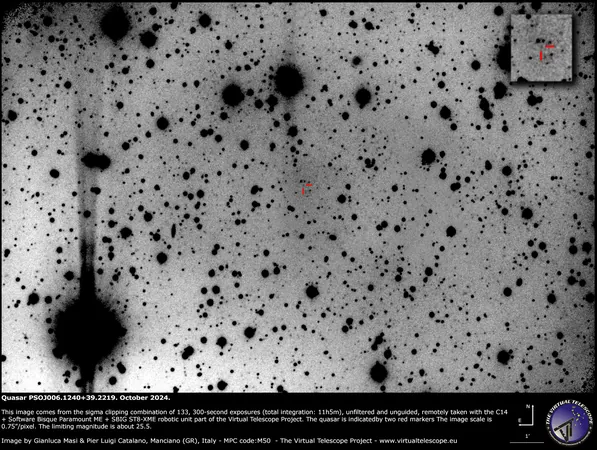
Revolutionary AI Model Set to Transform Space Weather Forecasting!
2024-11-11
Author: Daniel
Introduction
In a groundbreaking new study, researchers from the Los Alamos National Laboratory and the University of North Carolina at Chapel Hill have developed an advanced predictive model that leverages the power of artificial intelligence to enhance our understanding of space weather, particularly concerning "killer electrons." These high-energy particles, which travel at speeds approaching that of light, pose significant risks to satellites and other space-based technology by causing electronic malfunctions.
Significance of the Research
Yue Chen, a lead physicist from Los Alamos and author of the study, emphasized the importance of this research, stating, “This study proves the feasibility of using the Laboratory's particle data to predict the dynamics of killer electrons. It also highlights the significance of long-term space observations in the AI era.” Indeed, the urgency of improving space weather forecasting methods has never been more critical, especially as our reliance on satellites for navigation, communication, and scientific research continues to grow.
The Predictive Model: PreMevE-MEO
Published in the peer-reviewed journal **Space Weather**, the new forecasting model, named Predictive MeV Electron—Medium Earth Orbit (PreMevE-MEO), aims to provide more precise and timely hourly forecasts of electron activity. This model integrates data from 12 GPS satellites in medium Earth orbit, as well as a geosynchronous satellite operated by Los Alamos. By employing cutting-edge machine-learning techniques, which combine convolutional neural networks and transformers, the researchers have successfully enhanced the model's predictive capabilities.
Innovative Data Utilization
What sets this approach apart is its utilization of a rich dataset that spans over a century of satellite observations, providing an unprecedented amount of "big data" critical for training AI models. Indeed, this unique dataset of X-ray dosimeter particle data—made publicly available in 2017 and archived by NOAA's National Centers for Environmental Information—offers a more comprehensive understanding of the space environment than what traditional NASA missions could provide.
Impact on Space Weather Forecasting
This innovation has the potential to revolutionize space weather operational tools, empowering scientists to issue timely warnings about space weather events that threaten satellite operations. With the implementation of PreMevE-MEO, we stand on the brink of more reliable space weather forecasts that can help protect our technological assets and enhance the safety of future space missions.
Conclusion
As climate change continues to affect both the Earth and space environments, the ability to predict solar activity and its impact on Earth's magnetosphere becomes increasingly vital. The integration of AI in space weather forecasting not only promises to advance our scientific understanding but also underscores a new era in meteorological science, where every bit of data counts in safeguarding our planet’s technological infrastructure. The future of space exploration hinges on our capacity to navigate these challenges, and AI may be the key to success.


 Brasil (PT)
Brasil (PT)
 Canada (EN)
Canada (EN)
 Chile (ES)
Chile (ES)
 España (ES)
España (ES)
 France (FR)
France (FR)
 Hong Kong (EN)
Hong Kong (EN)
 Italia (IT)
Italia (IT)
 日本 (JA)
日本 (JA)
 Magyarország (HU)
Magyarország (HU)
 Norge (NO)
Norge (NO)
 Polska (PL)
Polska (PL)
 Schweiz (DE)
Schweiz (DE)
 Singapore (EN)
Singapore (EN)
 Sverige (SV)
Sverige (SV)
 Suomi (FI)
Suomi (FI)
 Türkiye (TR)
Türkiye (TR)